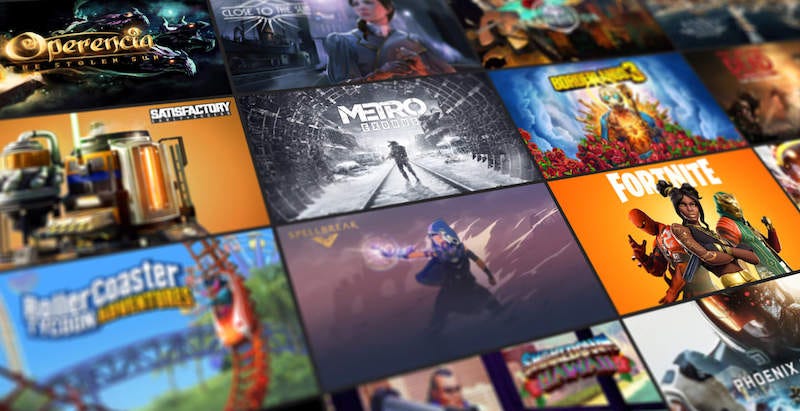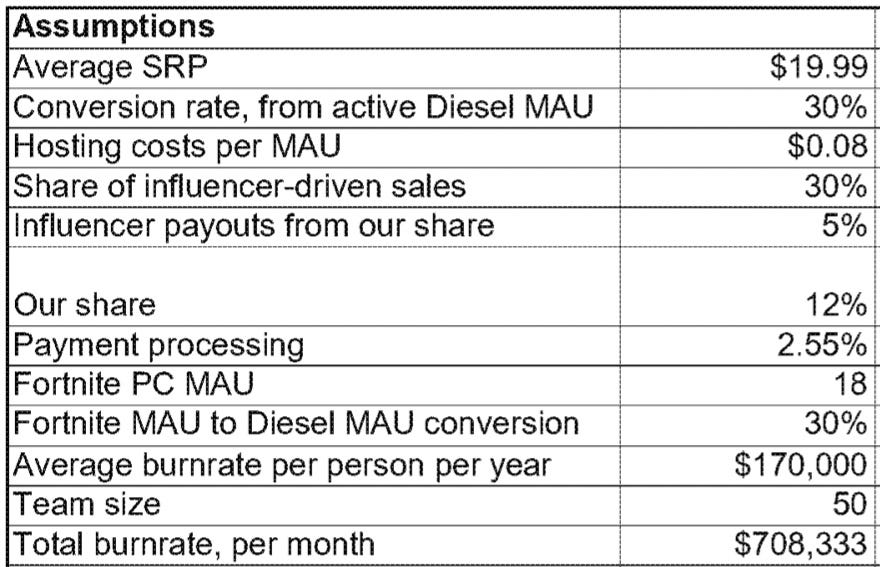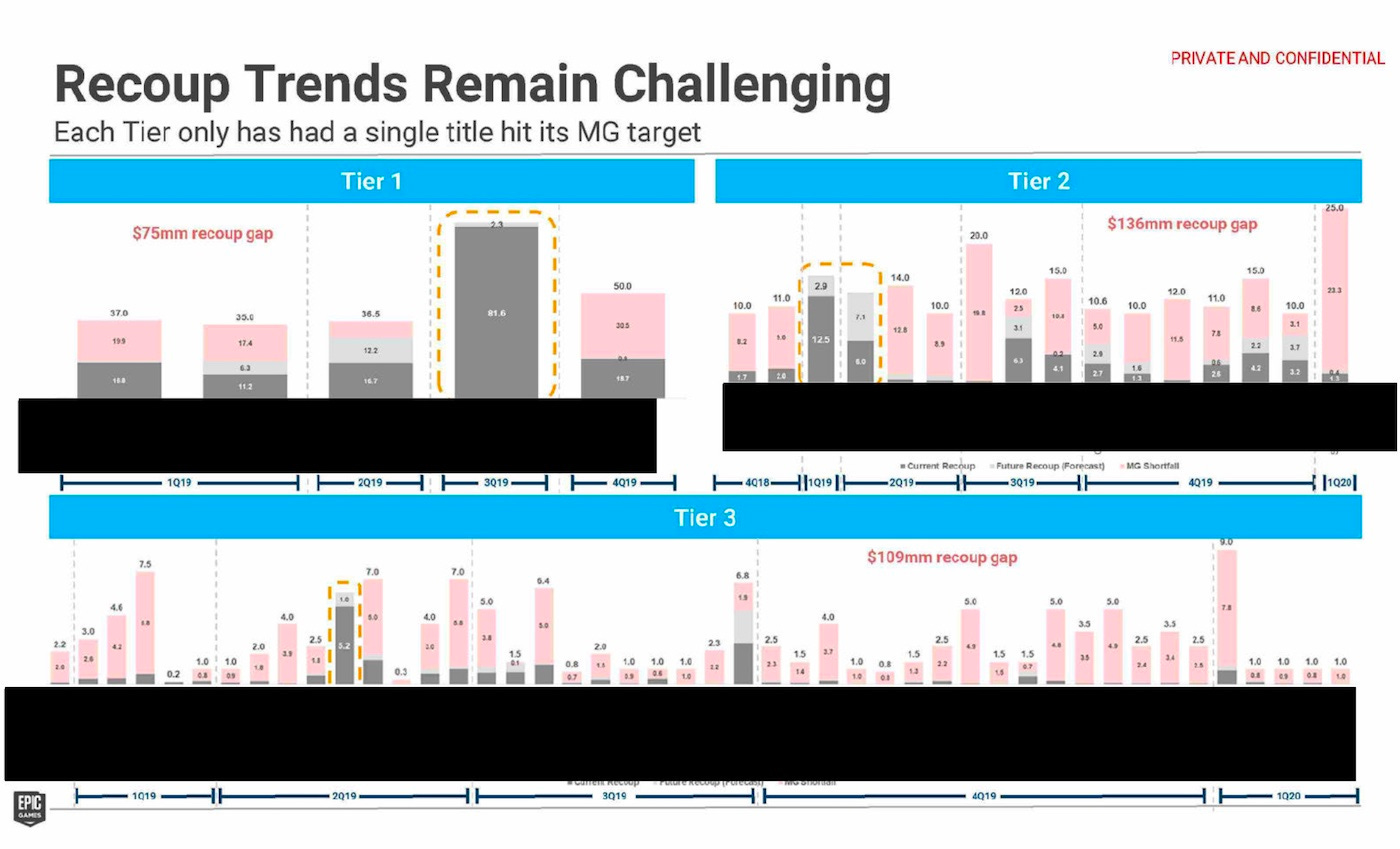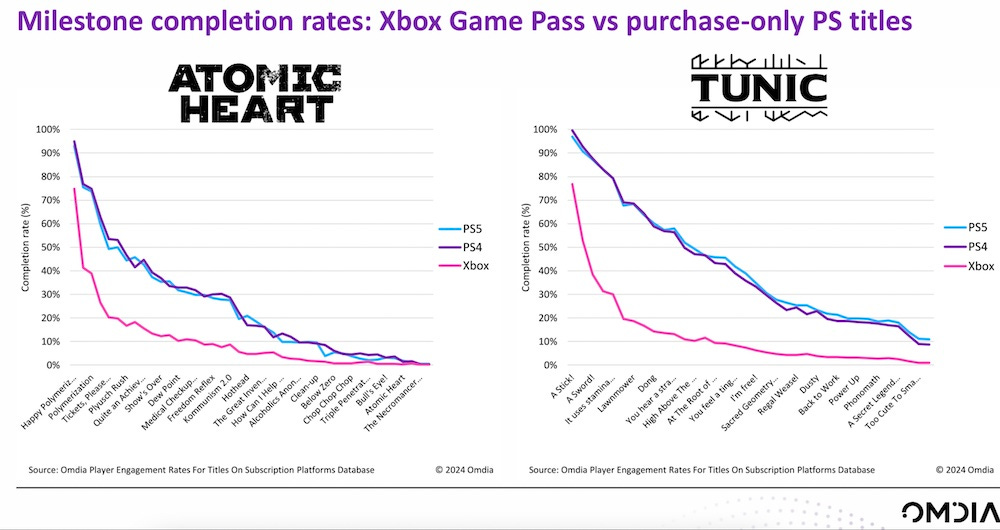Exclusive: the numbers behind Epic's 12% store cut
Publikováno: 25.3.2024
Also: lots of post-GDC discovery news, folks.
[The GameDiscoverCo game discovery newsletter is written by ‘how people find your game’ expert & company founder Simon Carless, and is a regular look at how people discover and buy video games in the 2020s.]
We’re so back, and thanks to everyone we saw at GDC last week. Seeing people in ‘real life’ is fun! But we’re amped to return, push the pedal to the metal, and bring you a whole bunch more insight. And we start with yet more interesting lawsuit docs….
BTW, if you’re wondering what happened to Dragon’s Dogma 2 on Steam late last week after its launch (it wasn’t good, unfortunately), our Plus subscribers got a good breakdown of it - with lots more handy trend data - on Friday. Sign up here for that!
The numbers behind Epic Game Store’s 12% cut..
As we continue to trawl through the docs from the Wolfire vs. Valve lawsuit that we covered the other week, by far the most interesting info is from another subpoena-ed party, Epic. (Do their lawyers choose not to redact for strategic reasons, or is it a George Bluth type situation?)
We already covered those grumpy Tim Sweeney emails to Valve about Steam not decreasing platform cut for the ‘little people’. And a search of newer lawsuit docs reveal quite a lot more context into how Epic set the 12% cut for Epic Games Store.
A reminder: Sweeney was complaining on Twitter/X in 2017: “Why Steam is still taking 30% of gross [when] MasterCard and Visa charge 2-5% per transaction, and CDN bandwidth is around $0.002/GB?”, adding: “the internet was supposed to obsolete the rent-seeking software distribution middlemen, but here's Facebook, Google, Apple, Valve, etc.”
So, the Epic Games Store went live on December 6th, 2018 with three games, including Supergiant’s Hades. This was pretty quick, given that planning was in progress as late as June 2018, as documented in this Epic internal email thread from Sergei Galyonkin. (.PDF link.)
You may know Galyonkin as the former creator (and still owner) of SteamSpy, and he was Director Of Publishing Strategy at Epic from 2017 to 2023. (He’s over at Build A Rocket Boy now, heading up publishing strategy for Everywhere & other titles.) Some comments on this fascinating email thread:
Epic Games Store’s brief was clearly ‘show competitors up on platform cut’: emphasis in bold is ours, but per Galyonkin: “Even with 90 people (fixed cost around $12M per year), we should be able to not lose money at 10%, including 5% influencer payouts going out of our share and with 2.55% processing costs.”
We’re reminded of the classic ‘limbo’ - ‘how low can you go’ - dance: some initial math(s) “15% gives us a nice comfortable buffer and I'd decrease it to 14% to make Tim [Sweeney] happy. At 14% with 5% going to influencers, people will assume we're taking 9%, which is unheard of.” (Readers, they went lower in the end…)
Epic’s head of EGS Steve Allison does say some profit would be nice:“We don't have the facilities overhead to consider [due to Epic already having a physical office], but… ideally we create an entity that is healthy and profitable, not dependent on [Fortnite] revenue.”
I think it’s fair to point out that Fortnite was taking off at this point, so profit wasn’t an issue. And these internal documents confrm that Epic Games Store’s goal was to show a very low-margin platform cut, primarily for the founder’s ideological reasons.
And we also get to see the specific math behind it, thanks to this lawsuit document (.PDF link.)
This is the first part of the math, based on 18 million MAUs for Fortnite on PC (at the time!), and includes a 12% Epic share, with influencer payouts modeled at 30% of an additional 5% that Epic would cover. (We suspect it was way less than that in the end?)
And this is the really interesting bit - an estimate of actual hosting costs per 1 million MAU on Epic Games Store. Epic estimated that the store would gross $32 million per month, and create a $1.4 million monthly profit for the company, after all costs:
So far, so good. (Even if a 4.36% profit margin for an initial business model would seem outlandishly low for some businesses.) And here’s a third lawsuit document(.PDF link), from July 2018, which has the conclusion of the EGS ‘cut’ discussions:
“On 7/6 Danny, Sergey and Steve had a long conversation with Tim [Sweeney] exploring a range of options (85/15, 88/12, 91/9 + scenarios re: funding the Influencer splits from the Epic share.) After looking at several options on the white board and Sergey/Chris O’s financial model we locked in on the final of 88/12 splits, with Epic funding the first 5% of the Influencer UA links attributable sales from the Epic share for the initial 24 months of the platform's life.”
That’s indeed what Epic rolled out with. But now, they needed exclusive games! And the first one of those to be locked down - setting the platform’s release date - was Supergiant’s Hades: “We did come to the decision to make [Hades] the launch title for the platform - this means a 12/7/2018 launch and a reveal of the game AND the Diesel platform.”
In the end, EGS was announced a couple of days before that, but it was the start of a spending spree - more than a billion dollars - to secure Epic Games Store PC exclusives, primarily in the 2018-2021 timeframe. The idea was to provide recoupable advances, with Epic making their money back as those titles grossed $ on EGS.
We covered these in a 2021 piece that grabbed very interesting data from the Apple vs. Epic lawsuit. But suffice to say, it didn’t go so well for recouping those advances - largely due to the hit-driven nature of the game biz, and overpaying for content. (And, of course, EGS itself not taking off as they had hoped.)
The Apple lawsuit data shows $1.13 billion in cumulative Epic advances to games up to early 2020 (!), and as the internal doc says - ‘recoup trends remain challenging’:
Where to go from here? Well, why fund titles to be on EGS first, if they don’t recoup, and then other platforms get a lot of the upside? So Epic powered down its ‘advances for third-party games on EGS’, and powered up its Epic Games Publishing plans in 2020, offering: “Full creative freedom and ownership... Fully-funded projects... 50/50 profit sharing.”
However, of that first batch of three devs, only Remedy has actually shipped anything, four years later. (That was Alan Wake II, which seems to have done ‘fine, not spectacularly’. Neither Playdead nor Fumito Ueda’s GenDesign have even announced their new games.) And of a handful of later publishing partners, Spry Fox is now owned by Netflix, and Eyes Out has also been dark since 2021.
While games from all these studios may still debut, it seems like Epic has phased down investment on the game store platform on PC - for now. It’s happy to have the PC store hang out and be a beach-head for its push to make iOS and Android standalone stores, which it can do with Fortnite as a lead game.
And overall, Epic Games Store isn’t dead. The company just announced that “Players spent $310 million on 3rd Party applications [in 2023], down 13% year over year.” 9 figures ain’t bad!Overall, EGS is still a place that some AAA GaaS titles do gross decently. (If not smaller games.)
But that 2023 gross revenue number is lower than the gross estimate in the original 2018 EGS business model, even before the billion+ in third-party advances. This is a clear indication that EGS didn’t - in the end - manage to compete majorly with Steam.
And Epic’s excess Fortnite profit (or investor $!) has now transitioned again - from EGS exclusives, to Epic Games Publishing titles, and now to the Fortnite in-game islands ecosystem, which it’s paid $320 million out to in the last 12 months (!).
Here’s how that payout seems to be going, according to David Taylor’s excellent analysis and graphs of this latest pivot. Yet, as David says: “The top nine [Fortnite Creative] developers have all been on the platform since before UEFN was introduced, and have captured 40% ($121 million) of the Fortnite Creative engagement pool.”
And, while there are hopes of creating a massive ecosystem within Fortnite for much more diverse genres and types of games: “The majority of those creators’ successful maps were already established before UEFN launched and enabled new forms of gameplay 12-months ago.” (Yes, teen Fortnite modders are now multi-millionaires, out of nowhere.)
In other words, Epic’s continuing down the path of ‘Fortnite plus what?’ - and its main ongoing thrust seems to be ‘Fortnite plus other games within Fortnite’. So its direction of travel is now ‘games as a platform’, a la Roblox, as opposed to ‘stores as a platform’, a la Steam. (We actually think this is a better direction for them.)
And concluding, it’s good to grok its early Epic Games Store ‘cut’ math, via this Valve vs. Wolfire suit. In particular, it gives us more idea of how platform cut affects (large!) profitability for services like Steam. We’ll be exploring this more soon…
The game discovery news round-up…
Wrapping up for this newsletter, let’s take a look at some of the top game platform and discovery news out there. And it goes a little like this:
Omdia’s George Jijiashvili presented a talk, ‘Unpacking the Impact of Games Library Subscriptions’, at GDC, and above is a highlight: achievement completion rates from Xbox Game Pass Day 1 titles vs. paid PlayStation SKUs. (Game Pass has lower completion rates, but no doubt lots more people got to play it there!)
There’s lots of GDC 2024 ‘hot takes’ out there, but just linking to one of them: “Lots of people laid off / looking for jobs; Mobile F2P & console is dead for all but the big publishers; Work for hire devs still struggling but business starting to pick up… Not as much Roblox/UEFN noise as I was expecting.” (And web3 pretty active, still…)
Oh yes, Apple got sued by the U.S. Department Of Justice - and 16 states - “accusing it of maintaining an iPhone monopoly”, including “that Apple refuses to allow game streaming apps that could make the iPhone a less valuable piece of hardware.” (Ex-Microsoft exec Steven Sinofsky thinks“there’s a lot of table pounding going on”, vs. actual substance.)
Meanwhile, the EU is pounding the table too, based on Apple’s responses to the EU’s Digital Markets Act & opening up App Stores to external payments. But there’s some bite to the bark, since Apple “can be fined up to 10% of the company’s total worldwide turnover.” (‘Just’ $38 billion, nearly 40% of Apple’s 2023 profit!)
We already partly covered Epic’s GDC announcements, but a big thing was: “bringing Rocket Racing, Fall Guys, and LEGO elements to Fortnite creators” - more here, and IP holders get 15% of the gross from licensed worlds. (More coming soon?) Also: “the highly requested first-person camera”, physics sandbox gameplay and a lot more versatility for Unreal Engine for Fortnite.
Feb. 2024’s U.S. game hardware & (most) software spending was up 2% in February YoY to $4.7 billion, helped by Monopoly Go! on mobile, despite a 30% drop in game console sales. One notable stat: “Nearly 60% of Helldivers II [U.S] sales in Feb came from Steam.” (And that’s in a console-heavy country, of course…)
GDC’s awards shows are always good to check, and Venba won the Grand Prize at the Independent Games Festival, with Baldur’s Gate 3 triumphing in the Game Developers Choice Awards, grabbing four awards, including Game Of The Year.
The UK's Advertising Standards Authority has a rule that games with loot boxes have to disclose their presence in ads. Researcher Leon Y. Xiao noted that a lot of big companies - like EA, Jagex & Miniclip, aren’t doing that, and got his complaints to the ASA about them upheld. (Good for him?)
As spotted on Twitter, “The PS5 just got a BIG UI update… - Live wallpapers - Widgets (battery, storage) - Friend activities - Currently on Beta - Limited to the US (Explore tab).” Here’s a video touring it - though YouTube commenters are still unimpressed with PS5’s UX, compared to what the PlayStation 4 built over time.
GDC announcement microlinks: Meta’s new ‘Oculus Publishing Ignition’ plan includes 6 months of prototype/MVP funding for “[VR] game concepts that target the midcore player”; Xbox released its ‘Gaming For Everyone’ product inclusion framework and talked about its indie game outreach; the Future Gaming Show happened & has 50+ new game trailers for you to poke, prod and peruse.
Finally, we previously covered YouTuber James Channel’s cursed ‘I Made a Nintendo PlayStation’ video. He’s back for more, with ‘I made a NES Game play NES games’ - not for the faint hearted! As one YT commenter says, “It's shocking the amount of angle grinding a console can take, and still work”:
[We’re GameDiscoverCo, an agency based around one simple issue: how do players find, buy and enjoy your PC or console game? We run the newsletter you’re reading, and provide consulting services for devs, publishers, funds, and other smart game industry folks.]





